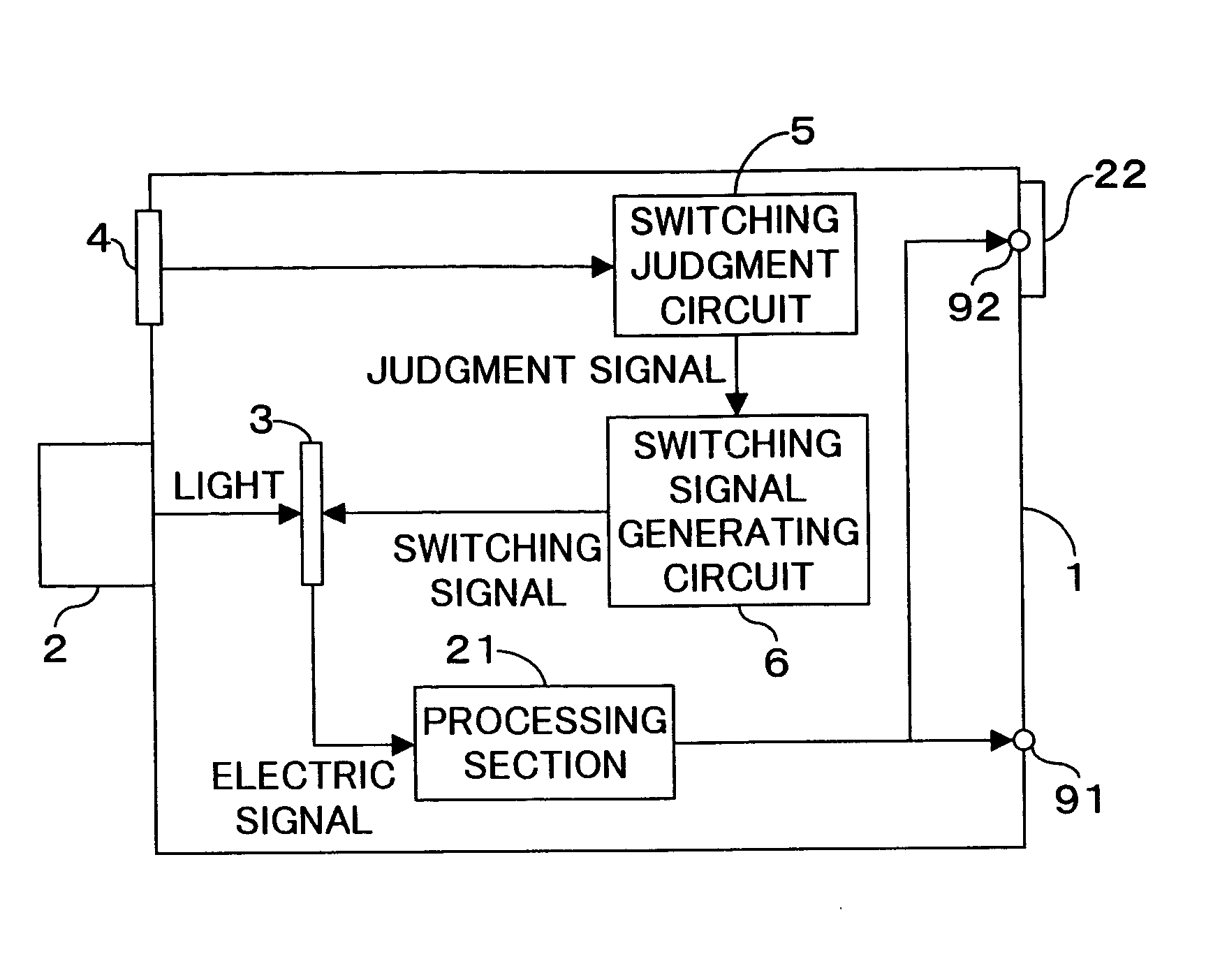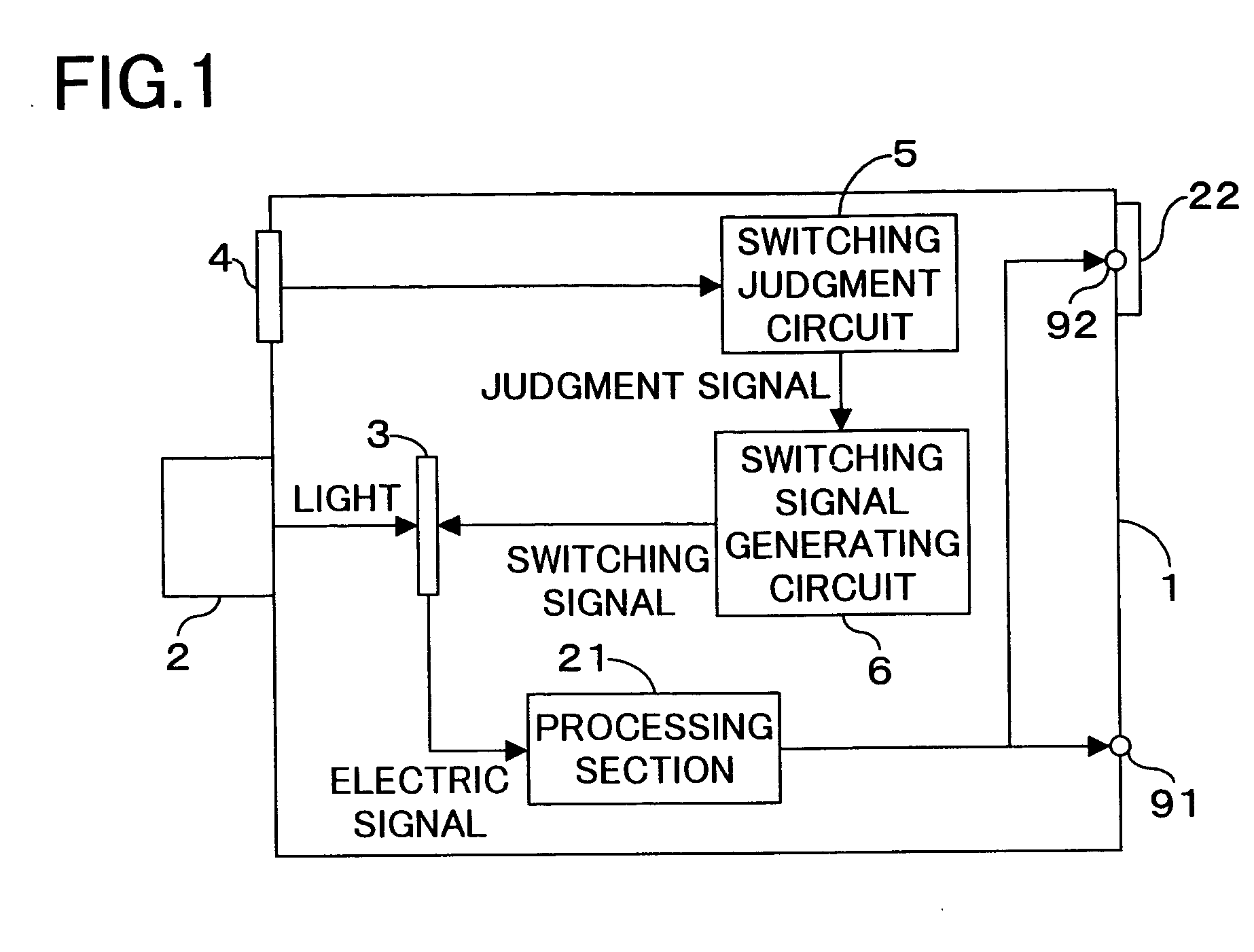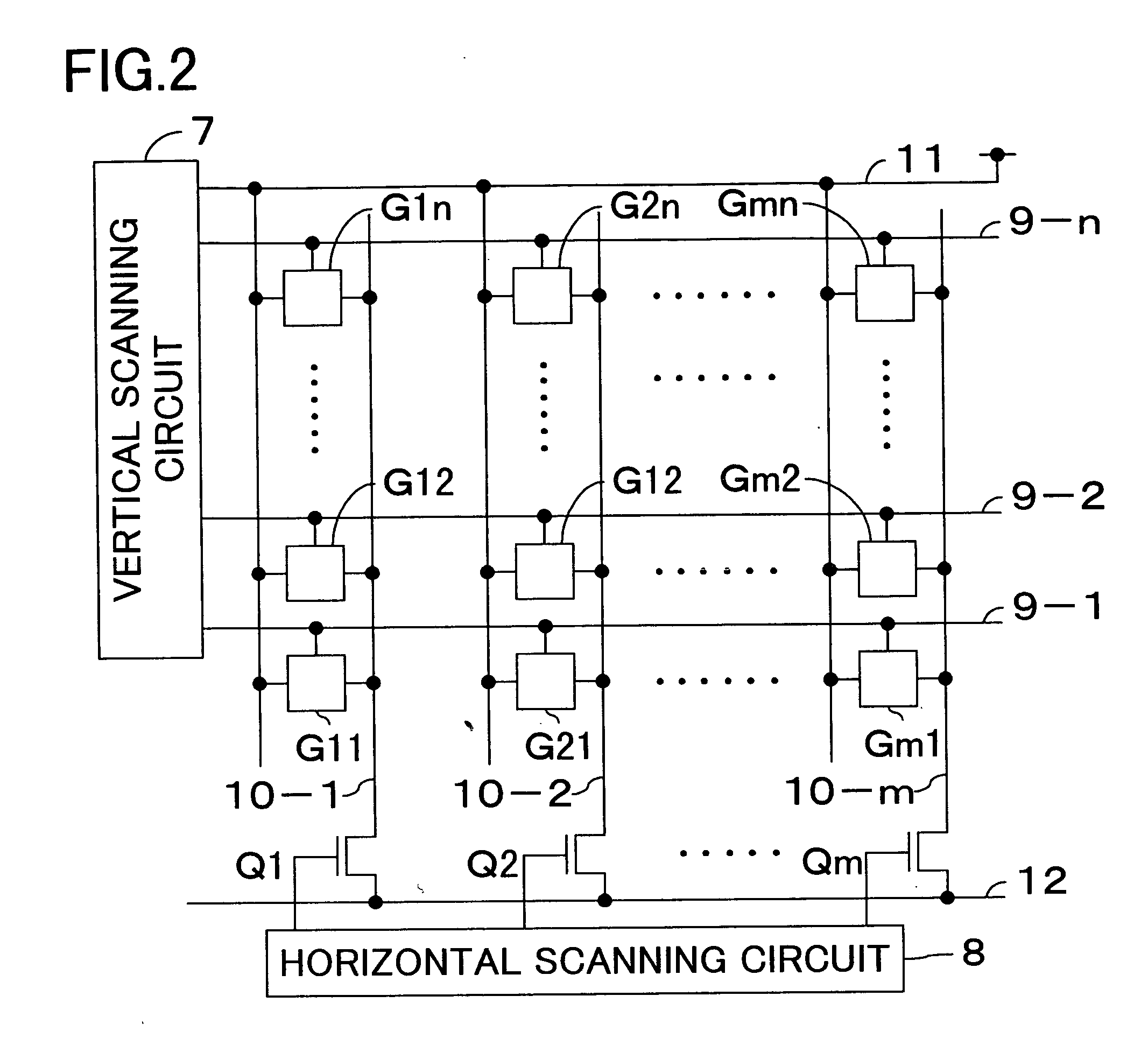Image-sensing apparatus
a technology of image sensor and sensor body, which is applied in the field of image sensor, can solve the problems of flat blackness, inability to acquire the data of dim parts of the subject, and inability to acquire the data of parts of the subj
- Summary
- Abstract
- Description
- Claims
- Application Information
AI Technical Summary
Benefits of technology
Problems solved by technology
Method used
Image
Examples
first embodiment
[0054] A first embodiment of the present invention will be described below with reference to the relevant drawings. FIG. 1 is a block diagram showing the internal structure of the image-sensing apparatus of a first embodiment of the invention. FIGS. 2 and 4 are block diagrams showing examples of the structure of the area sensor used as a solid-state image-sensing device in the image-sensing apparatus shown in FIG. 1. FIG. 3 is a circuit diagram showing an example of the circuit configuration of each pixel of the area sensor shown in FIG. 2. FIG. 6 is a circuit diagram showing an example of the circuit configuration of each pixel of the area sensor shown in FIG. 4.
[0055] In FIG. 1, the image-sensing apparatus 1 has an area sensor 3 that outputs an electric signal obtained by logarithmically or linearly converting the light incident thereon through an objective lens 2, a detector 4 for detecting the brightness of a subject, a switching judgment circuit 5 that determines whether to sw...
second embodiment
[0098] A second embodiment of the present invention will be described below with reference to the relevant drawings. FIG. 8 is a block diagram showing the configuration of a principal portion of the image-sensing apparatus of this embodiment. It is to be noted that, in the image-sensing apparatus shown in FIG. 8, such elements as are used for the same purposes here as in the image-sensing apparatus shown in FIG. 1 are identified with the same reference symbols, and their detailed descriptions will be omitted. In this embodiment, the area sensor and its pixels are configured in the same manner as in the first embodiment.
[0099] The image-sensing apparatus 1A shown in FIG. 8 has an objective lens 2, an area sensor 3, a switching signal generating circuit 6, a processing section 21, an automatic sensitivity adjustment circuit 40 that detects the brightness of a subject and performs sensitivity adjustment on the basis of an electric signal (brightness signal) that it receives from the a...
third embodiment
[0110] A third embodiment of the present invention will be described with reference to the relevant drawings. FIG. 11 is a block diagram showing the internal structure of the image-sensing apparatus of this embodiment. It is to be noted that, in the image-sensing apparatus shown in FIG. 11, such elements as are used for the same purposes here as in the image-sensing apparatus shown in FIG. 8 are identified with the same reference symbols, and their detailed descriptions will be omitted. In this embodiment, the area sensor and its pixels are configured in the same manner as in the first embodiment.
[0111] In the image-sensing apparatus 1B shown in FIG. 11, the switching judgment circuit 5B receives image data from the area sensor 3 instead of receiving a brightness signal as is fed to both the switching judgment circuit 5A and the automatic sensitivity adjustment circuit 40 in FIG. 8. Moreover, on the basis of the image data received from the area sensor 3, this switching judgment ci...
PUM
 Login to View More
Login to View More Abstract
Description
Claims
Application Information
 Login to View More
Login to View More - R&D
- Intellectual Property
- Life Sciences
- Materials
- Tech Scout
- Unparalleled Data Quality
- Higher Quality Content
- 60% Fewer Hallucinations
Browse by: Latest US Patents, China's latest patents, Technical Efficacy Thesaurus, Application Domain, Technology Topic, Popular Technical Reports.
© 2025 PatSnap. All rights reserved.Legal|Privacy policy|Modern Slavery Act Transparency Statement|Sitemap|About US| Contact US: help@patsnap.com



